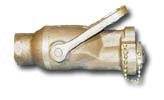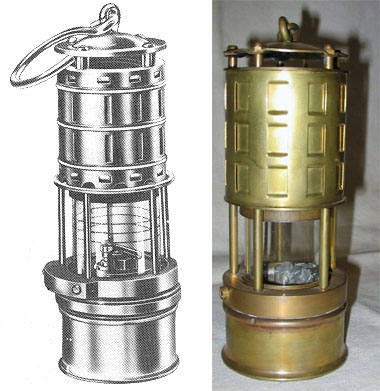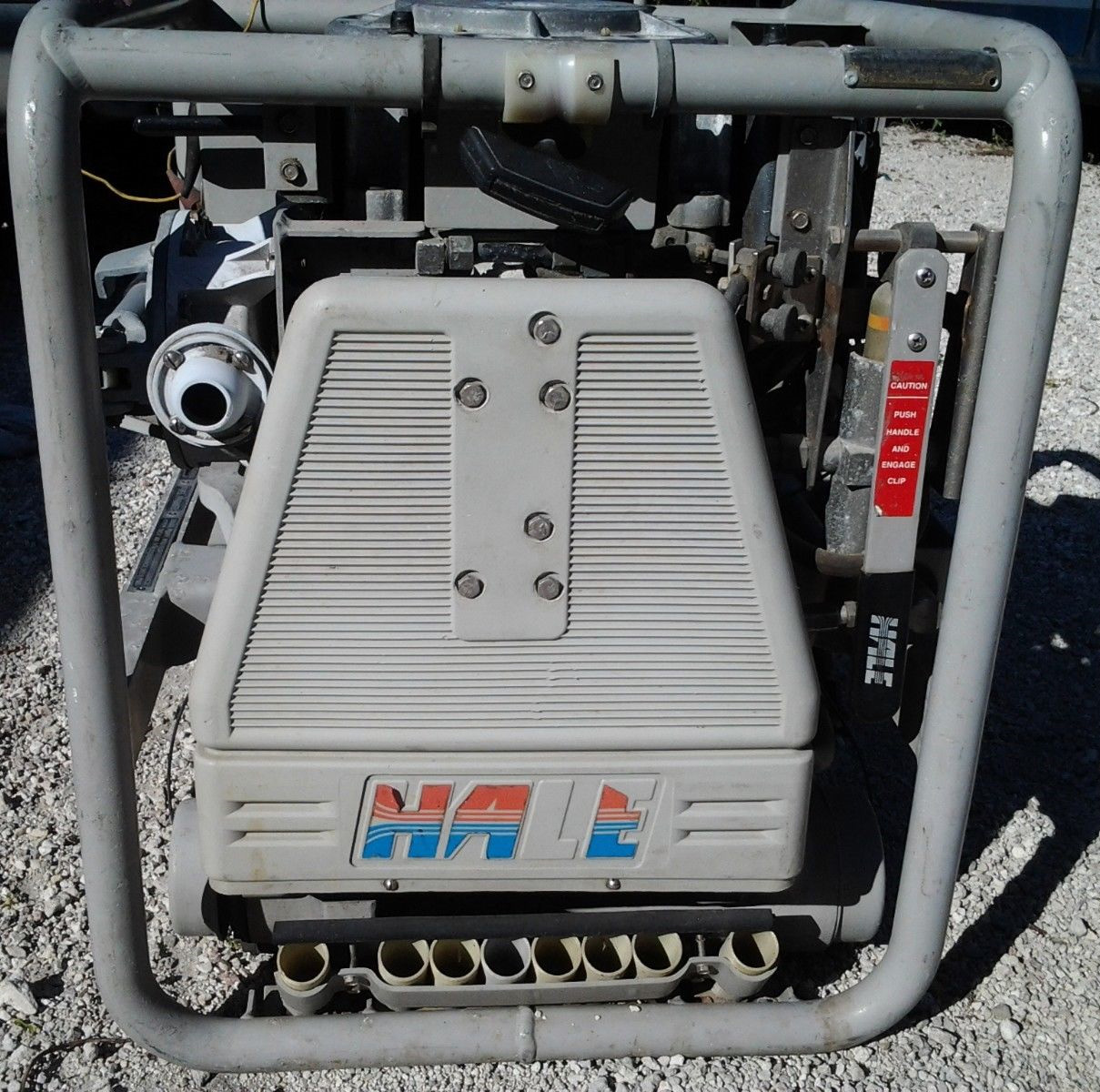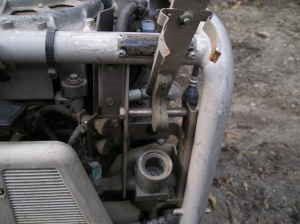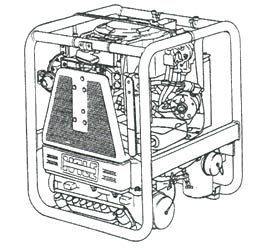| Designed for firefighting and dewatering operations,
the P-250 Mod 2 pump was developed in 1988 to replace
the gasoline-driven P-250 Mod 1 pump. Deliveries began
in late 1989. It was a 250-gpm, two-cycle, two-cylinder,
JP-5 fuel-driven pump. It had a propane starter as a
primer and was rated at 55 horsepower. Ignition was by
magneto, built into the flywheel with an electronic
power pack. Lubricating oil, NMMA TCW-II, was stored in
a tank with a clear line to observe the oil. A
fixed-ratio oiler (FRO) pump was installed to pump oil
to the carburetor; this mixture was used to lubricate
the engine components. Engine cooling was achieved by a
small fraction of pump discharge water, which was
by-passed through the cylinder head and cylinder block.
The pump was a double suction centrifugal type with
in-line suction and discharge connections. It had an
elapsed time meter, a discharge ball valve, and a
self-winding pull starter. The six-gallon fuel tank
provided one hour of operation. The pump consisted of an
engine, centrifugal pump, propane primer rack and
cartridge insert propane puncture device, propane
cartridges with stowage rack and insert device, hand
priming pump, water outlet gate, pressure regulator,
self-winding pull starter, electronic power pack, fuel
tank, oil tank, a fixed ratio oiler (FRO) pump, motor
controls and a pressure regulator with gauge.
Accessories provided with the pump included a special
tri-gate valve having two 1 ½-inch and one 2 ½-inch male
connections, a 3 inch x 10 foot hard rubber suction
hose, a 20 foot x 2½ inch exhaust hose, and a foot valve
strainer. The pump weighed 157 pounds without the fuel
tank. The pump could supply three 1 ½-inch or one 2
½-inch hose for topside firefighting, or it could
provide the actuation water for an eductor in below
decks operations. The pump was self-priming up to 16
feet; manual priming was required for greater suction
lifts. The 2 ½-inch discharge hose could be connected to
an eductor for lifts above 20 feet. A 3-inch male
suction connection and the discharge side had a 2 ½-inch
male connection to attach a hose, wye-gate or tri-gate
for multiple hose runs in firefighting. The pump
required two personnel to transport it. Eleven personnel
were required to set up and rig it for operation. In
ship wide or major emergencies, any member of the ship’s
company could provide assistance to the qualified
operator in charge; otherwise, pump teams from repair
party lockers operated the pump. The repair lockers with
specific P-250 Mod 2 teams in Condition I were 1, 2, and
sometimes 3 and 4, depending on the ship’s class.
Suitable means had to be provided to carry the poisonous
exhaust gases into the clear, particularly when the pump
was used below decks. A 2-inch by 20-foot rubber exhaust
hose was coupled to the exhaust outlet to remove the
gases through an alternate overboard discharge
connection when operating on the DC deck. During
operation, extreme care had to taken while using the
propane cartridges as a primer for starting. Sailors had
to ensure that the cartridge was inserted properly and
completely secured. If it was not, the cartridge could
explode, propelling out like an uncontrolled missile and
possibly causing serious bodily injury to surrounding
personnel. After being operated with sea water, the pump
had to be flushed with fresh water and drained before
being restored. The pumps were generally stowed topside
in water- and fume-proof sealed covers for safety
because of the fuel tanks and propane cartridges, as
well as to reduce salt water corrosion. The P-250 MOD 2
Pumps were replaced by the P-100 Pumps in 1995. |
